I'm Back From Surtex and Blueprint 2018...Here's a Recap from a First-Time Tradeshow Exhibitor5/31/2018 Hello! I have been asked by many people to post about my experiences exhibiting for the first time at Surtex and Blueprint this May in NYC, where I was represented by Nerida Hansen Print & Textiles. So here is quite a long post, which I hope you will find interesting and maybe helpful. If you read this and have any questions, please feel free to ask! How I Got to NYC: Last year, a designer asked me (through social media) if I could help her with her table at Blueprint 2017, so I used that as my excuse to head to NYC! Because Blueprint overlaps with Surtex, I decided to also splurge and pay the huge entry fee to walk the show and see what it was all about. I stopped by booths and talked to designers and agents at both shows and handed out my business card (of course, only while they weren’t busy!) This was quite uncomfortable for me, but I had spent all that money to be in NYC so I thought I better just do it. I also attended various Facebook group and show meet-ups and met other designers. It was nice to meet Rachael Taylor of Make It In Design (one of my online course teachers) in person at the Guggenheim too! During the past year, I decided I would try to find an agent to represent me and sent out inquiries. The first round of inquiries took me a solid 2 weeks to research, write and send. I got a couple of “hits”, but for various reasons they weren’t a good fit. When I sent out the 2nd round several months later, the agent Nerida Hansen offered to represent me at Surtex 2018, so I signed on. Later, she managed to get a late entry into Blueprint Show 1 as well, so my work ended up being shown at both shows. 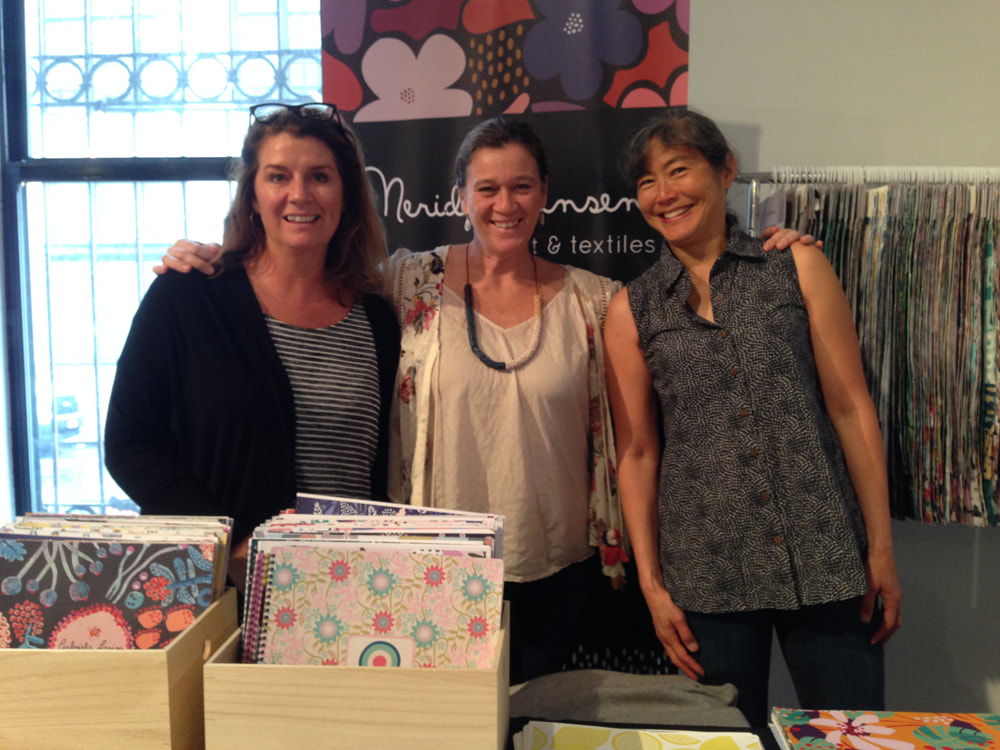 Myself (right), my agent Nerida Hansen (centre) and her colleague Emily at Blueprint which was at the Hudson Mercantile building this year in NYC. About Surtex and Blueprint Shows: Both Surtex and Blueprint take place in NYC annually in May, although there was some discussion that this might change. Surtex is by far the bigger, more established show and is located in the giant Jacob K. Javits Convention Center, at the same time as the National Stationery Show and the International Contemporary Furniture Fair (registration gets you into all 3 shows). Hundreds of artists, designers and agents show art for licensing and sale. Many big agencies show there, as well as first-timers in much smaller, less expensive booths. At Surtex, exhibitors are separated into booths of various sizes with walls, so there needs to be a lot of thought given to how to configure and decorate your booth. Most booths had big banners, great signs, and tables and chairs up front full of portfolio books and printed sheets. Blueprint is a smaller show, located only a couple of blocks away from Surtex. It is really 2 3-day shows: this year Show 1 was May 17-19 and Show 2 was May 20-22 which overlapped Surtex. Although Blueprint is smaller, it is growing. This year, it expanded to 2 floors for each show. At Blueprint, there are no booths and walls; instead there are tables and banners designed to stand behind each table. It is much less expensive to show there, and everyone has the same amount of space to exhibit in. Best of all, entry to walk around is free. Some exhibitors show at both Blueprint 1 and 2, or at Surtex and Blueprint. Potential clients will often walk both Surtex and Blueprint and because Show 2 overlaps Surtex, it was perhaps busier than Show 1 this year. Preparing for the Shows: Once I knew my work was going to be exhibited at the shows, I spent many months designing new patterns in collections, and revising some of my existing patterns. I started in about December and continued to work on patterns until mid-May. Although all agents work differently, it was great working with Nerida because she provided some feedback on how to make our designs more marketable, provided guidance as to on-trend colour palettes and themes and, for a first-time exhibitor like me it was invaluable to be given a timetable of deadlines for marketing and for the printed materials that would be shown at the show booths. Here are some of my random thoughts about preparing for these shows, in no particular order: Have a recognizable style: I know you’ve probably heard this over and over again. But when you go to a show and see just how much work there is to look at in so many different styles, I think the most eye-catching booths are the ones that really have a consistency to them. If you are showing with an agent as I was, I think it is difficult to “stand out from the crowd” (Nerida had 40 designers in total), so having a definite style can really set you apart. A valuable tidbit that Nerida told me was that she offered to represent me because she could see I already had a recognizable style. There is still a lot of work for me to do in this regard, but it certainly was great to get that feedback from an “objective” and industry-experienced observer! Do a pattern inventory: When I found out I would be showing this year, I immediately sat down and figured out which of my already existing patterns could be shown as is, or revised, and which patterns could be collated into collections. Because Nerida wanted 60 patterns, in collections, from each of her designers for her fabric samples, this was very useful to do. It gave me an idea of how many new patterns I needed to design. Often I could use existing patterns as the start of a new collection. Be clear about which patterns are for sale or license: When you sell a pattern outright, you are selling copyright to it. So, it might be important that the pattern has never been offered for sale before, perhaps if it won a design competition or if you have it on a POD site, such as Spoonflower. Just something to think about. Needless to say, it would be very useful to have your patterns well organized, something I need to do. Figure out what tasks you need to do, set solid deadlines, and give yourself lots of time: Since I was working with an agent, I was given a list of tasks (eg. setting up my fabric panel, poster print, and Lookbook files for printing) and deadlines. The first of our deadlines (for fabric panel printing) was about 2 months before the start of the shows. But if you don’t have this given to you, then make sure to sit down and figure out what you need to do and when you need to do it by, giving yourself lots of time for printing, and avoiding last minute computer hassles. Put lots of thought to the appearance of your banners and booth setup: Banners will be the first thing that draws people in. I believe that the shows will tell you specifically what dimensions the banners have to be, but definitely think about the practicalities of how you will hang them up, how your tables and chairs will be placed and whether you want to add more to your booth, such as shelving with products, flowers and baskets on the tables, etc. We had a couple of last minute trips to Staples! You want the booth to be eye-catching. Do lots of marketing before the show: I think it is really invaluable to post a lot in the months before the show on your own website and blog, on design blogs and on social media. It is really time-consuming, but it does generate a lot of interest. Poster prints and Lookbooks set up on a table at Surtex (centre) and some of the fabric panels ready to show (left and right). During the Shows:
I didn’t spend as much time at Blueprint since I arrived near the end of that show, but was there for all days of Surtex. I helped setup the Surtex booth, and then stood at the booth for the first part of each day. This year was the first time I had any work exhibited at a tradeshow, very exciting! Because I was exhibiting with an agent, I didn’t have to personally be there, and didn’t transact any business directly, but I did get to watch and learn, and chat with some of the clients who stopped by the booth. Here is an overview of what we had to show at our booths: --A3 Poster Print Sheets: My “best” patterns were printed onto large, glossy, good-quality paper (about 50 in total). Because there were over 40 designers exhibiting with Nerida, each designer had their prints clipped together in piles. Clients liked to come and flip through these. In my observation, these and the Lookbooks got the most attention at the booths. --Lookbooks: My printed Lookbook ended up being 32 pages and was essentially a catalogue of my patterns (over 100), presented in collections, with mockups. Each designer had her own printed Lookbook at the shows and as mentioned, got a lot of attention. At first, I was freaking out that I had to learn InDesign to lay out the pages, but it really was very easy to use and now I love it. I highly recommend learning this program. --Online Lookbooks: In addition to the printed Lookbooks, we also provided a version to be viewed online which I think is invaluable for the follow-up period after the shows. This online version is essentially the same as the printed version, but since there were no printing cost constraints and the deadline for these was later, I was able to continue designing more patterns. My online version now has about 160 patterns and can currently be viewed on Nerida’s agency website. Of course, this can be updated quite easily as I create new designs. --Fabric Collections: Our pattern designs were also printed onto fabric panels, organized by collection, and hung from hangar racks. From what I observed, these fabric panels are unique to Nerida who focuses on textiles, and no one else had these at their booths. Although our designs looked gorgeous on actual fabric, I think these didn’t get as much attention as the A3 Poster Prints and Lookbooks. --Postcards: Postcards usually have your designs on one side and contact info on the reverse, and are a super valuable item to have on your table. I observed that many potential clients didn’t really stop too long to look closely at all the printed sheets and books (there really was a lot to look at), but they did scan the postcards that were right up front on the table and grabbed a few that caught their attention. So definitely having postcards to take away is a must and more interesting and attention-grabbing than smaller business cards. If you were exhibiting on your own, one suggestion would be to get postcards printed with different designs, so that clients can stop and choose what they like to take away. Here are some of my observations and thoughts about exhibiting at the shows: At a minimum, have larger-sized paper poster prints, Lookbooks and postcards to show: These items were the most popular. Swallow your shyness and reach out to people: Many times potential clients would stop in the middle of the wide aisles and look over the booth. This was a good time to say something like, “Are you looking for something in particular”? or “Can I help you to find something?” or “What types of designs are you looking for?” just to inspire them to walk towards your booth. This almost always worked to draw people in. Unless they already know you, it is just too easy for them to keep on walking down the aisle. If you plan to show as an independent designer, try to bring a friend: I talked to many of the independent designers at both shows this year, and almost all of them brought a friend or colleague with them. There is so much to carry and organize, last minute headaches when setting up and you do need to get lunch, so it really helps to have someone else with you. Also, if you are busy chatting with a potential client, a helper can help to draw in others. I did meet a couple of designers who were on their own, so it can be done. Try to stay within walking distance to the shows: It was great to be able to walk to the shows every morning and walk back afterwards. Distances can be big and transit can be confusing, so I think staying near the venues is an advantage. My hotel was about a 15 minute walk away from Blueprint and Surtex. Try to visit a tradeshow before exhibiting: If you can afford it and can fit it in, I think it is really a good idea to check out a tradeshow before you actually exhibit at one. I was able to go to NYC in 2017, to help another artist and just to see what the shows were all about. Not only did this help with picturing everything ahead of time (even more important if you are exhibiting independently), but it really would take the stress out of being in an unfamiliar big city on your own when it comes to exhibiting for the first time. One of the BEST things is meeting other designers and agents: I have “met” many fellow designers through online courses and Facebook groups, so it was a highlight of my trip to meet them in person at the shows, at organized group meet-ups, and at the Blueprint rooftop party where you can relax and chat with other exhibitors. It was invaluable to be able to discuss pros and cons and observations about each of the shows, trade notes, and just realize that others have all the same questions and that we can learn from each other. I had a chance to go for dinners with two groups of designers, and this was truly a privilege. Going forward, I can see how these connections will be a wonderful support network as we each try to move forward in our designing journeys! It’s all about small steps, so just keep going one step at a time: Now that my first Surtex and Blueprint are behind me, I realize that showing at a tradeshow is not an end goal, but just one step in becoming a successful designer. I knew this in theory before the shows and had been told this many times, but it was hard to remember this when I spent months working diligently, making the journey to NYC and standing at the booths. I must admit to some disappointment that I didn’t sell a lot of designs at the shows, but this is not unusual at all. It really is all about the follow-up period after the shows, and because my agent is following up the contacts she made, I am waiting to see what results. And for my part, I have a long list of things to do to keep moving forward. At one of the meet-ups at Surtex organized by the Art of Licensing Facebook group, I was fortunate to meet the experienced Ronnie Walter. She mentioned that one thing she sees is that a lot of designers “quit too soon”. So, I decided I was not going to be one of those!
18 Comments
Dora Yvonne Textiles
5/31/2018 01:24:46 pm
Thank you for posting your experience! Very helpful!
Reply
Jackie
5/31/2018 01:42:52 pm
You are very welcome! Sorry it was so long!
Reply
5/31/2018 06:06:51 pm
Such a great, concise & helpful write up! Your designs are so pretty, too. I'm sure more sales and licensing is about to happen. Congratulations!
Reply
Jackie
5/31/2018 09:11:42 pm
Thank you for your kind words! I'm glad you found it helpful!
Reply
Thanks so much for this post, it was awesome to read and gain an understanding to what is involved. The hardest thing I find as a beginner is to get your designs out there. I am creating patterns and loading to POD,s and showcasing on Instagram and website. I have also read that we must also hold some patterns back incase they want to be purchased outright, so it's a bit of a catch 22. All the best with your sales and thanks again for a wonderful insight.
Reply
Jackie
6/2/2018 05:53:26 pm
You are very welcome! Just some thoughts of mine, others might have different insights!
Reply
Jackie
6/4/2018 09:26:02 am
You are very welcome Anne! We should have another chat sometime!
Reply
Jackie Tahara
11/11/2018 10:02:24 am
Hello Tessa! Thanks for getting in touch! I'm not sure I can give alot of advice, but I think you should do both, ie. continue on your own (making lots of art, sending out inquiries and submissions, etc.) and perhaps also send submissions to agents as well. It does take alot of time to research who to send to, writing an intro/bio, deciding which images to send, reviewing each website for submissions guidelines. But I found that once you do it once, then the next rounds get easier and quicker. I think you just have to set some time aside, do the legwork and be very systematic (which I found hard to do because I just love the designing part!) Hope that helps?! If you have any other questions, please do get in touch again!
Reply
Danny
12/1/2019 02:03:10 am
Hi Nerida,
Reply
Danny
12/1/2019 02:07:04 am
Hi Jackie (apologies, made a mistake on above comment!),
Reply
Jackie Tahara
12/1/2019 12:54:37 pm
Hi Danny! You're right, there are a ton of companies out there, but I can make a few suggestions and then you can have a look at them and see if they are right for you. Also, it can depend on where you are located as well when it comes to shipping, etc. For postcards, business cards, brochures, etc. I might look at moo.com. I get my business cards there as do many fellow designers and really do love the quality. And you can have up to 50 (I think) different images on them too. For Look-books, perhaps blurb.com. For fabrics, perhaps try Spoonflower, or if you are in UK you could also try Fashion Formula. Not sure about the A3 poster prints, but I would usually get those done by a local printer close to where I live, since they are just printed on paper. Does that help? Let me know if you have any more questions. J
Reply
Danny
12/1/2019 01:01:54 pm
Hi Jackie - thank you so much! I believe this will be a good start:) Appreciate your input a lot!!
Jackie Tahara
12/1/2019 02:45:48 pm
Glad to be of help! All the best, J
Jackie Tahara
12/1/2019 02:44:37 pm
Happy to help! All the best, J
Reply
Danny
12/11/2019 10:02:56 pm
Hi Jackie, hope you are well! Thought I'd approach you once again for something that was sitting on my mind. Would you know if the designs that are put on Instagram, are downloadable by someone? Meaning, is there anyway for someone to steal them, and use them? This looks to be an inhibitor from going on insta so far.... what are your thoughts or experience with this or any social media for sharing designs?
Reply
Hello again, Danny! It is a good question you ask and there are all kinds of opinions about this. Personally, I do post a lot of my designs on my Blog (as you can see), IG, FB and Pinterest, always taking care that I don't post new designs that a potential client would not want "out there" before they might want to buy/license it. I think you are right that they can be "stolen" if they are out there publicly, but if you want to be noticed then I think you have to put your stuff out there. If you do repeat patterns, I know some designers make sure that they don't post the full repeat in a post. That's only my personal opinion and different designers would probably have different opinions. Hope that answers your question! All the best, J
Reply
Leave a Reply. |
AuthorJackie Tahara of UnBlink Studio Archives
July 2024
Categories
All
|
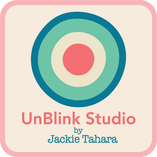
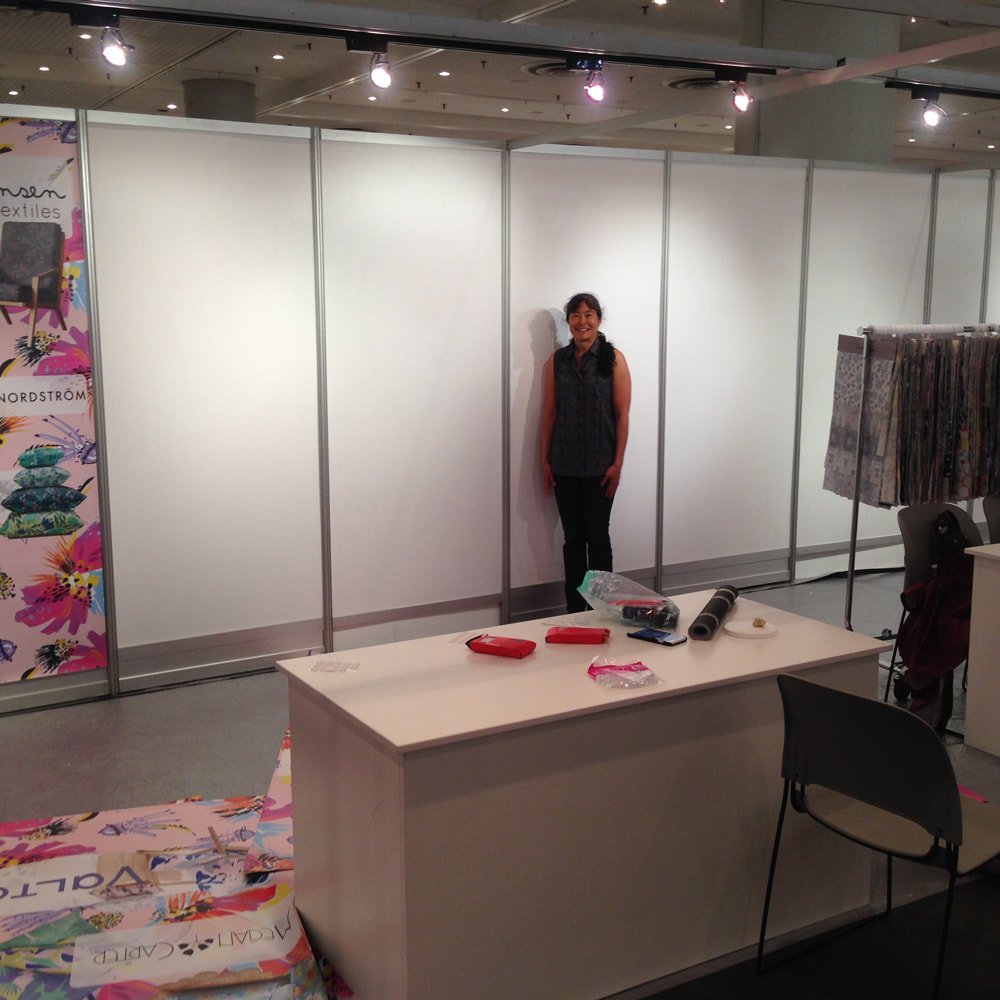
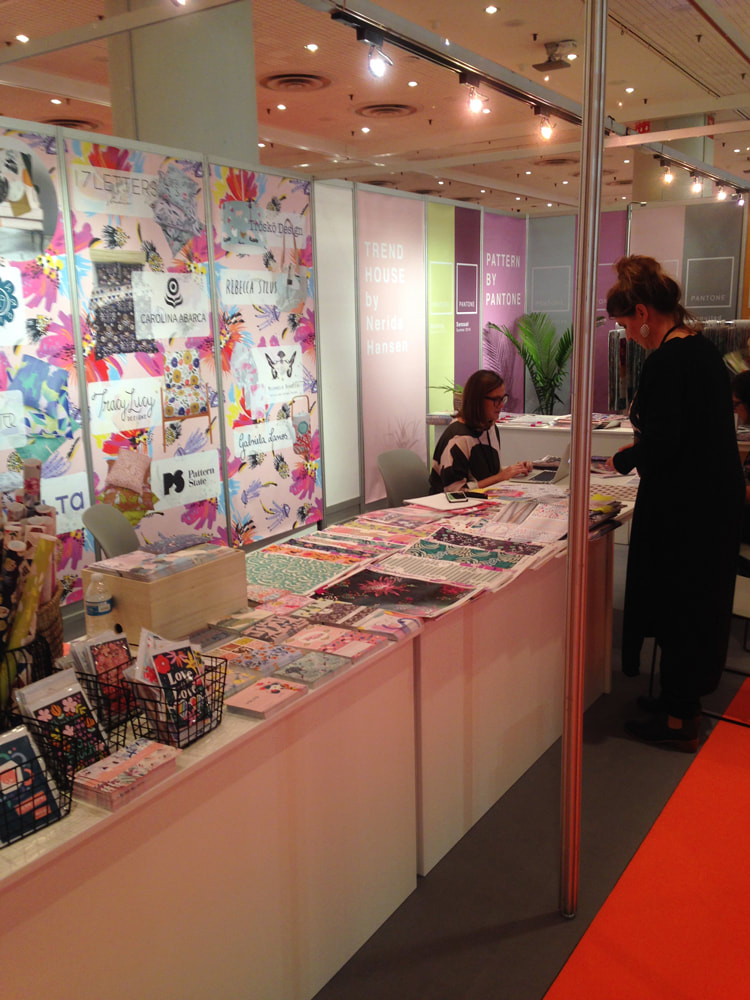
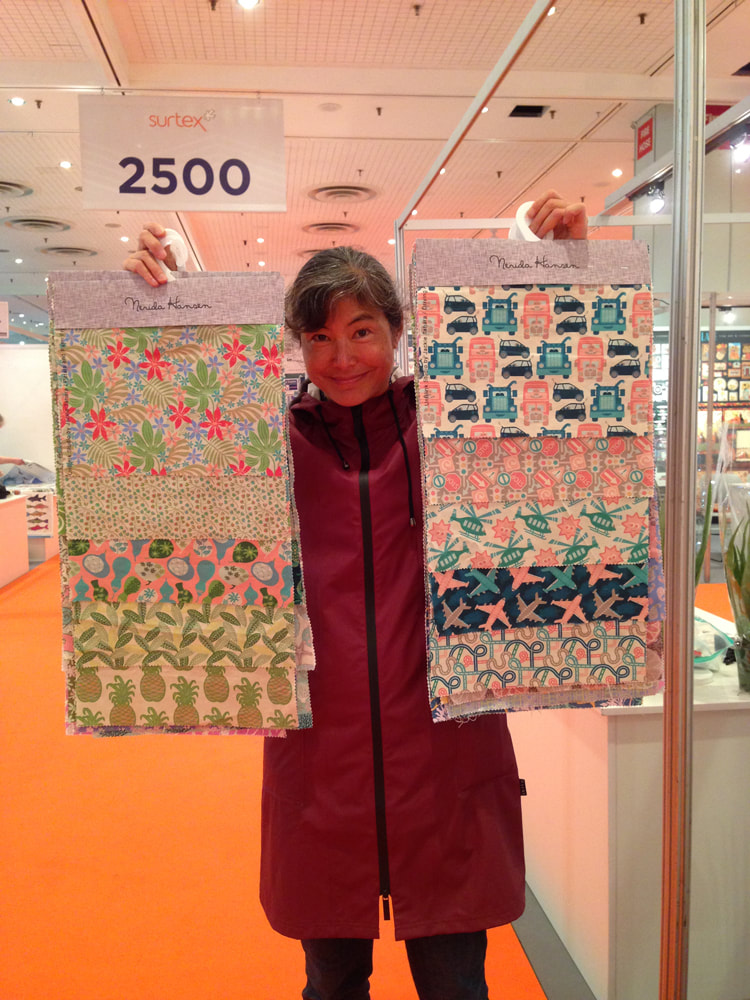
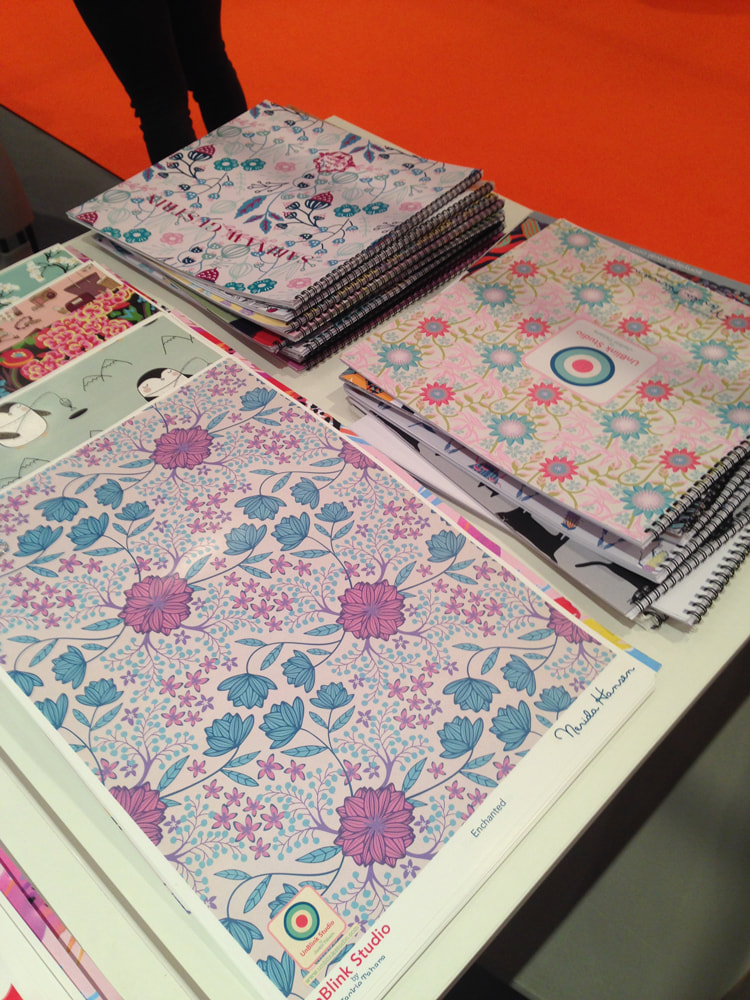
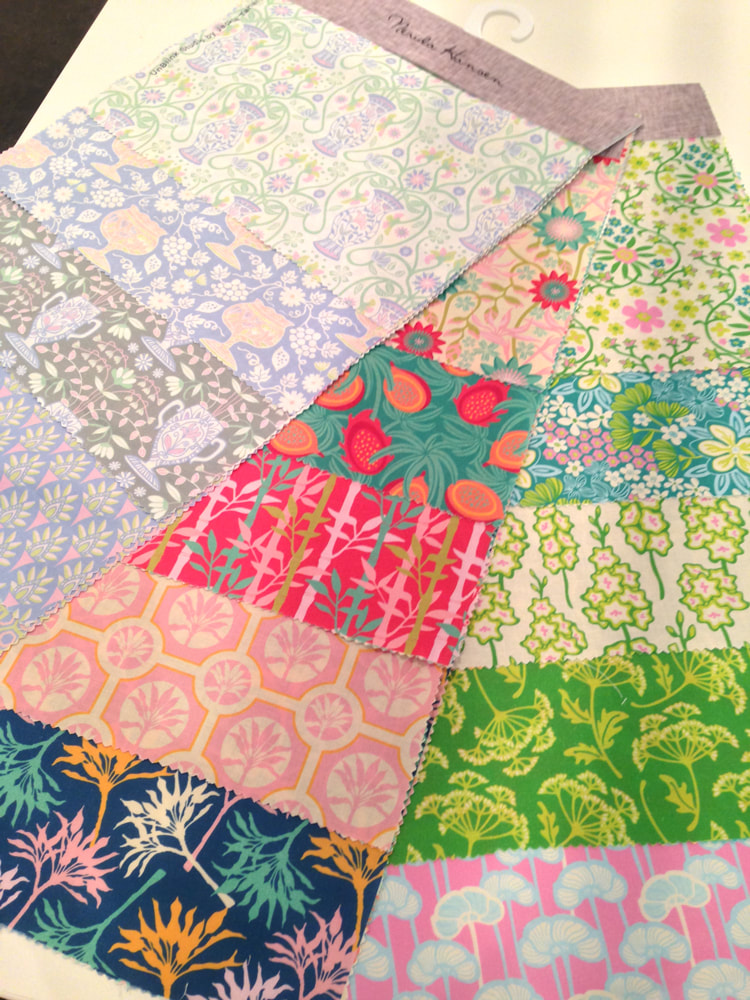
 RSS Feed
RSS Feed